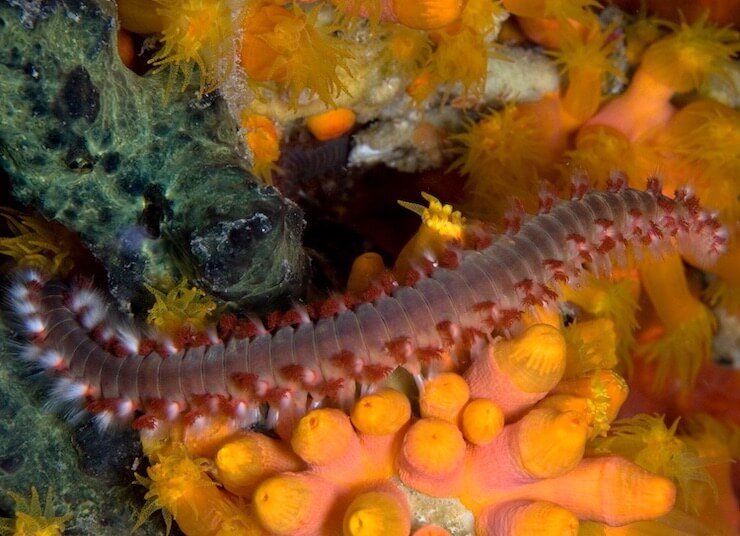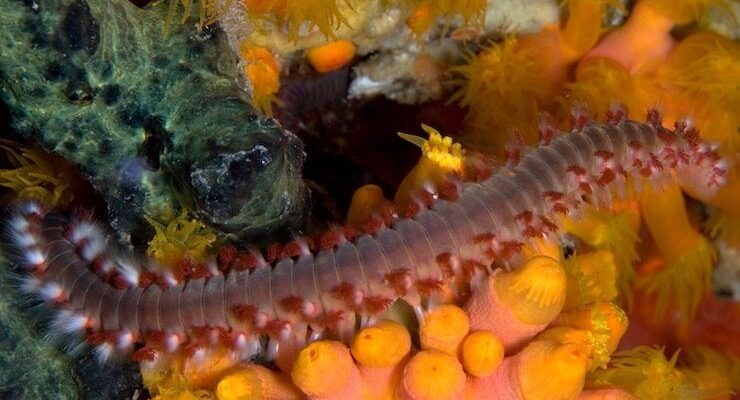
Understanding the relationship between **bristle worms** and coral is like piecing together a puzzle. These worms can be beneficial in various ways, yet they can also contribute to problems in specific scenarios. Let’s dive deeper into the world of these fascinating creatures and their potential impact on coral health.
What Are Bristle Worms?
Bristle worms belong to a group called **polychaetes**. They’re mostly found in marine environments, particularly in coral reefs, where they play a variety of roles. Picture them as the cleanup crew of the reef. They help break down organic matter, which contributes to the overall health of the ecosystem. However, their appearance can be a bit off-putting. With their long, segmented bodies covered in bristles, they can look like something out of a science fiction movie.
You might wonder, how do these worms fit into the larger picture of coral life? Well, bristle worms thrive in the nutrient-rich waters that coral reefs offer. They’re often found hiding in the nooks and crannies of corals, which has led to the idea that they might be causing irritation. But is that true?
Coral Irritation: What’s the Deal?
Coral irritation can manifest in various ways, like changes in color, tissue loss, or even death. But let’s be clear: not everything that bothers coral is a direct attack. Just like we can get irritated by environmental changes or pollution, corals can react negatively to shifts in their surroundings. Stress factors include water temperature, salinity, and even the presence of certain organisms.
Now, you’re probably thinking, “Okay, but how do bristle worms fit in here?” Here’s the thing: while some species can damage coral, many are harmless and even beneficial. If bristle worms are causing irritation, it’s often because they’re in high numbers or in the wrong environment. It’s like having too many weeds in your garden—they can stifle the growth of your beautiful flowers.
Myth or Fact: Do Bristle Worms Cause Coral Damage?
Diving into this question feels like exploring a treasure chest of myths and truths. The belief that bristle worms are responsible for coral irritation often comes from observing their presence during coral stress events. But just because they’re there doesn’t mean they’re to blame.
Research shows that while some bristle worms can potentially harm corals, many species are vital for reef health. They help control algae and recycle nutrients. It’s essential to look at the entire ecosystem rather than point fingers at one species. In fact, some studies suggest that stressing corals leads to more significant issues, and bristle worms are merely an indicator of an already compromised ecosystem.
The Role of Bristle Worms in the Reef Ecosystem
Bristle worms are a crucial part of the marine food web. Think of them as unsung heroes—nibbling on detritus and maintaining balance. They help decompose waste and recycle nutrients back into the water. This process can actually benefit corals, providing them with essential nutrients for growth.
However, it’s a bit of a balancing act. When bristle worm populations explode, they can compete with corals for space and resources. This overpopulation can occur due to nutrient pollution, often from human activities nearby. So, while bristle worms aren’t villains, excessive numbers could signal a larger problem in the reef ecosystem.
Signs of Coral Irritation
You might be wondering how to spot coral irritation. It’s not always obvious, but certain signs can alert you to trouble. Here are some common indicators to watch for:
- Color Change: Healthy corals are vibrant, but if they start to fade or turn brown, it’s a red flag.
- Tissue Loss: Look for areas where the coral tissue appears to be receding or peeling away.
- Increased Algae Growth: A surge in algae can indicate that the coral is stressed and unable to compete.
If you notice these signs, it’s essential to take action. Consider checking water quality and reducing pollution sources. Remember, a healthy reef is a happy reef!
How to Manage Bristle Worm Populations
If you’ve decided that bristle worms are becoming a nuisance, don’t worry. There are ways to manage their population without harming the reef. Here are a few strategies:
- Maintain Water Quality: Regular water testing helps keep nutrient levels in check. Clean water means less chance of bristle worm overpopulation.
- Limit Feeding: Overfeeding fish can lead to excess waste, fueling bristle worm growth. Stick to the recommended feeding amounts!
- Encourage Natural Predators: Some fish, like wrasses, enjoy snacking on bristle worms. Adding these to your tank can help keep their numbers down.
Monitoring your reef regularly can also help you spot any unusual changes early on. It’s all about creating a balanced ecosystem.
The relationship between **bristle worms** and coral irritation is complex. While some bristle worms might contribute to coral stress, labeling them as the sole culprits would be too simplistic. Think of them as part of a larger network in the reef ecosystem. Maintaining the health of coral reefs requires understanding how all the pieces fit together.
As we continue to explore and learn about our oceans, it’s vital to approach these topics with curiosity and care. Embracing biodiversity, addressing pollution, and promoting healthy reef environments are crucial steps we can all take. Remember, every little action counts toward preserving the beauty of our underwater worlds. Let’s cherish and protect these amazing ecosystems together!

